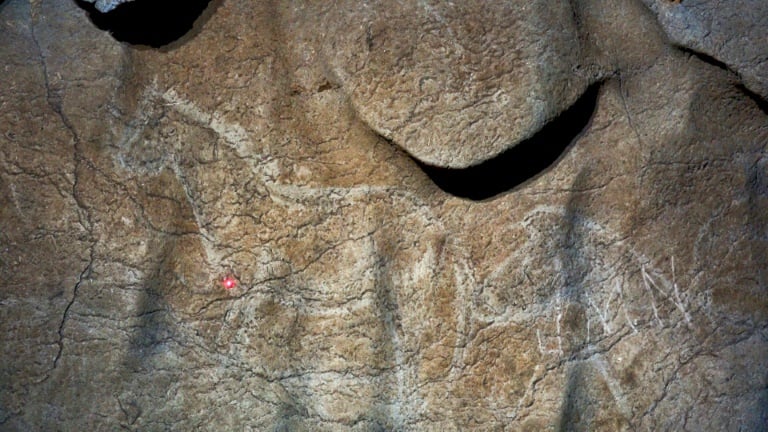Art World
What Gave Humans the Edge Over Neanderthals? It Was Art, a New Study Claims
Newly published research links cave drawings to advanced hunting skills.

Newly published research links cave drawings to advanced hunting skills.

Henri Neuendorf

Turns out art does make you smarter—at least according to one expert.
A new study suggests that prehistoric humans evolved to become the world’s dominant species, in part, because they created art. The hand-eye coordination and visualization skills developed by creating prehistoric cave drawings helped Homo sapiens master essential hunting skills, the study suggests, giving humans an advantage over their artless cousins, the Neanderthals.
The paper was written by psychologist Richard Coss of the University of California-Davis, an expert on art and human evolution, and a former drawing instructor. It was published in the Evolutionary Studies in Imaginative Culture journal.
In the paper, Coss maintains that there is “a causal relationship between the evolved ability of anatomically modern human to throw spears accurately while hunting and their ability to draw representational images.”
The researcher argues that while Neanderthals used thrusting spears to hunt tamer prey in Eurasia, Homo sapiens were spear hunting much more dangerous and alert prey in Africa. As a result, he postulates that Homo sapiens developed a larger parietal cortex—the region of the brain that controls visual imagery and motor coordination.
“Neanderthals could mentally visualize previously seen animals from working memory, but they were unable to translate those mental images effectively into the coordinated hand-movement patterns required for drawing,” Coss writes.
On the other hand, Homo sapiens were actually sharpening their hunting skills by creating cave drawings, he says: “Since the act of drawing enhances observational skills, perhaps these drawings were useful for conceptualizing hunts, evaluating game attentiveness, selecting vulnerable body areas as targets, and fostering group cohesiveness via spiritual ceremonies.”
To research his hypothesis, Coss studied 30,000-year-old drawings in the Chauvet-Pont-d’Arc Cave in southern France and concluded that the motions in the scrawls are similar to the arc that a thrown spear might take. In other words, prehistoric humans weren’t just doodling on cave walls; they were drafting plans, strategies, and representations that showed an acute awareness of their game.
The nexus between hunting techniques and drawing prowess may not be intuitive, but if the study is correct, the link between the skills could be one reason why Homo sapiens thrived while the Neanderthals died off.